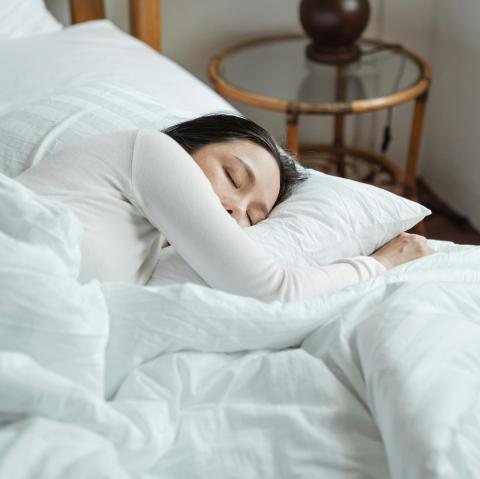A common question from patients to our Osteopaths is “Which pillow is the best?”
Unfortunately, this is not as simple a question as you would think. There are many factors that come into play when we talk about which pillow is best for you. What sort of mattress do you sleep on? What is your preferred sleep position? Do you like a soft or a firm pillow? Do you share your pillow with others?
So, how can we decide if a pillow is “good” or “bad” for you?
- Pillow height
- Research released in 2021 has concluded that “there remain no firm conclusions about the optimal pillow height” (https://www.ncbi.nlm.nih.gov/pmc/articles/PMC8544534/). This was a systematic review that looked at 23 studies that were conducted between 1997 & 2021. This was the results for supine (back sleeping) or lateral (side sleeping) positions.
- The general rule we have all probably heard is that you want a lower pillow if you sleep on your back, and a higher pillow if you sleep on your side. Makes sense as we are trying to keep our neck as neutral as we can. So, the study results also make sense as we are all different heights and widths.
- The hardest task is finding the pillow height that is best for you. You want to avoid having your chin too close to your chest, as this can cause discomfort at the junction between your neck and your back. On the flip side, you don’t want your neck to be in too much extension as that can also lead to discomfort. If sleeping on your side, you don’t want your ear too close to your shoulder (either top ear or lower ear) as that can lead to too much sidebending and may put a strain on your neck muscles. Add to this, how much does the pillow squish when you’re laying on it for a while?
- Pillow material
- What is the best pillow type? Feather? Memory foam? Latex? Polyester? Wool? Down?
- The answer is: whatever you are most comfortable with. Sounds like a bit of a cop out but this is also supported by research.
- The research did state, however, that you are more likely to wake up sore or stiff if you sleep on feather, down, wool or polyester. This is because these materials tend to lose their shape and support quickly. They can still be quite comfortable in the beginning but will need to be changed more frequently.
- Memory foam has a bit more give than latex and can be quite supportive. They can also be better for those with allergies as wool or down can irritate some people. The biggest negative is that you can feel quite hot when sleeping on it.
- Latex pillows consistently gave more positive results. They do sometimes need airing before use to get rid of the smell, however. These positive results were things such as a lower reporting of waking up with stiffness, less headache and a better quality of sleep. (https://www.ncbi.nlm.nih.gov/pmc/articles/PMC3076923/)
- Flat or contoured?
- Another question we get asked a lot is whether you want a flat or contoured pillow. Unfortunately, the answer is again going to be whatever you are most comfortable with. Some people love a contour! Some absolutely despise them.
- If we return to the research, there is moderate evidence that a contoured pillow design (higher sides to accommodate side sleepers and a lower, flattened middle to accommodate back sleepers) does lead to a more productive sleep. (https://www.sciencedirect.com/science/article/abs/pii/S1876382020314505)
- Mattress Type
- This is often not discussed enough, but it is really important!
- You could go out and buy the perfect pillow you found in a shop, only to get home and it is no good when you sleep on your own bed. Or if you take your favourite pillow on a trip and you have a horrible sleep and can’t figure out why. It’s likely the mattress.
- You will need to know if you are primarily sleeping on a soft (plush), medium or firm mattress. A softer mattress has a lot more ‘give’ and therefore can be a lot more forgiving of the various pillow profiles as your shoulder has more room to press into the mattress. A firm mattress is not as forgiving, and you may find you require a higher profile pillow as your shoulder doesn’t dig in as far.
So, what’s the answer? It’s complicated. But, if you know what firmness your mattress is, what position you mostly sleep in and if you prefer a certain material, you are most of the way there. The last thing to remember is that you may need a couple of different pillows. Some nights you may feel uncomfortable on your favourite contoured pillow but the flat one is feeling great or vice versa. Each day is different, and so are you.
At Your Body Osteopathy we love working with you to improve your comfort when sleeping. Having a good sleep is so helpful for your health. We have some pillows in stock, and we can review your favourite pillow if you bring it to your session.
Written by Dr Katie Shaw (Osteopath)

